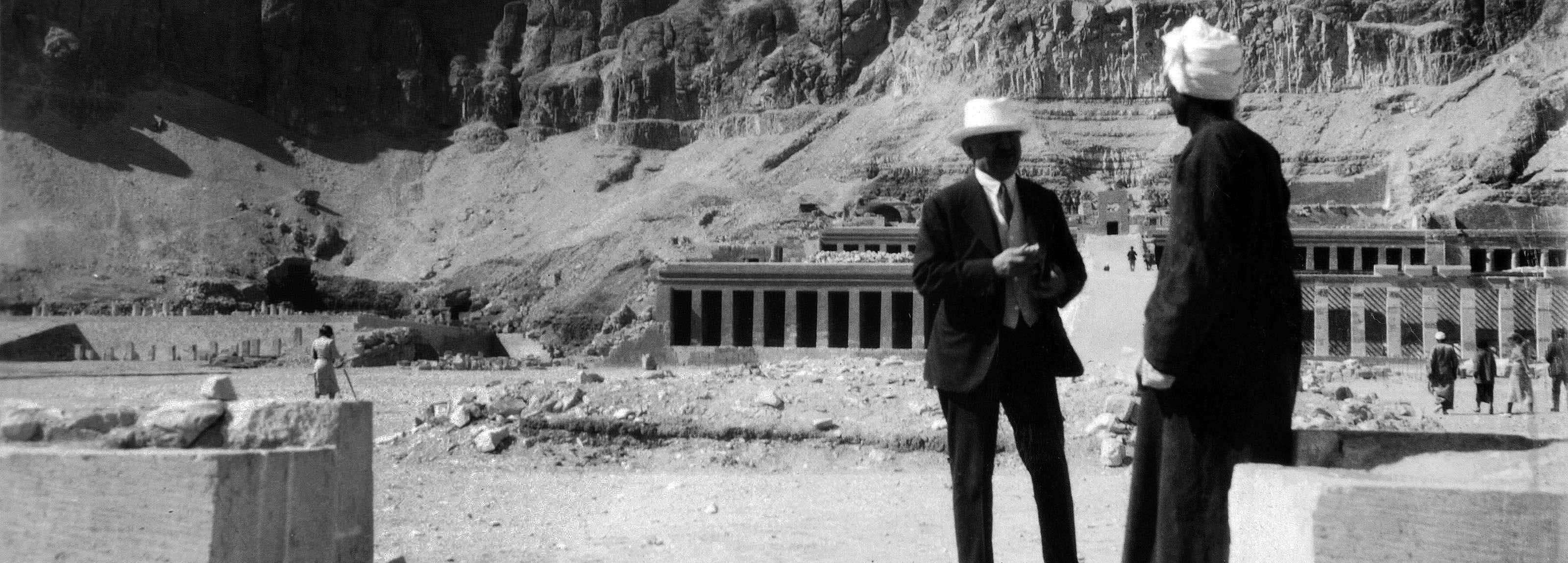
The Collector
Of Armenian origin, Calouste Sarkis Gulbenkian was born in Üsküdar, in Turkey, in the middle of the Ottoman Empire. In 1896, due to the persecution suffered by the Armenian community, Gulbenkian left Turkey with his family. After a brief stint in Cairo, he established himself in London and acquired British nationality. Later, he bought a small palace located on Avenue d’Iéna, in Paris. With the outbreak of the Second World War, Gulbenkian moved to Lisbon, where he stayed until his death in 1955.
Calouste Gulbenkian revealed his passion for art at an early age. This reflected his origins in Cappadocia – a major crossroads of religions and art – and Constantinople – another crossroads of civilisations and the capital of the Romans, Greeks, and Ottoman Turks. Throughout his life, he assembled an eclectic and unique collection that was influenced by his travels and his personal taste, and sometimes involved lengthy and complex negotiations with the leading experts and specialist dealers. His collection now totals over 6,000 pieces from all over the world and dating from antiquity until the early twentieth century (including examples from ancient Egypt, ancient Greece, Babylonia, Armenia, Persia, Islamic Art, Europe, and Japan). His attachment to the pieces that he acquired was so strong that he even called them his ‘children’.
Calouste Gulbenkian’s collection of paintings includes works by Bouts, Van de Weyden, Lochner, Cima de Conegliano, Carpaccio, Rubens, Van Dyck, Frans Hals, Rembrandt, Guardi, Gainsborough, Romney, Lawrence, Fragonard, Corot, Renoir, Nattier, Boucher, Manet, Degas and Monet. A favourite sculpture of his was the marble original of Houdon’s famous Diana, which had belonged to Catherine of Russia and which Gulbenkian purchased from the Hermitage Museum in 1930.

The collection grew over the years. The Paris collection was divided for security reasons and part was sent to London. In 1936, the collection of Egyptian art was entrusted to the care of the British Museum while the finest paintings went to the National Gallery. Later, in 1948 and 1950, the same works would be sent on to the National Gallery of Art in Washington.
As his collection grew, Gulbenkian grew more concerned about how to preserve his achievement but also how to avoid paying taxes on his legacy. In 1937 he started discussions with Kenneth Clark, who had advised him in assembling his collection, about a ‘Gulbenkian Institute’ at the National Gallery in London. However, he was declared an ‘enemy under the act’ by the British Government during the Second World War because he had followed the French Government to Vichy as a member of the Persian diplomatic delegation.
The British temporarily confiscated his share of the oil from the Iraq Petroleum Company. Although this was a technical legal decision – and after the war, the concession was returned to him with compensation – this action of his adopted country irritated him as he suspected that his partners were using the British Government to squeeze him out of the partnership. Consequently, he then considered the National Gallery of Art in Washington as a potential home for his collection and in 1943 Lord Radcliffe, his British lawyer became his chief discussion partner and confidante.
At the time of his death Gulbenkian does not appear to have decided where he wanted his collection to be housed and finally left it to Radcliffe to decide. However, it was clear that Gulbenkian wanted his collection brought together under one roof where people could appreciate what one man could achieve in his lifetime.
After his death, arduous negotiations with the French Government and the National Gallery in Washington ensued. In 1960, the entire collection was brought to Portugal, where it was exhibited at the Palace of the Marquises of Pombal (Oeiras) from 1965 to 1969.
Fourteen years after the death of this illustrious collector his wish was fulfilled, when the Calouste Gulbenkian Museum – specially built to house his collection – opened in Lisbon.